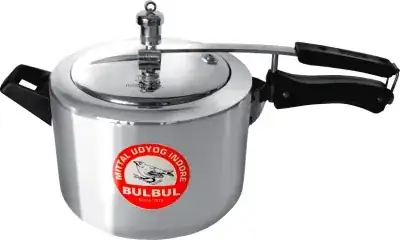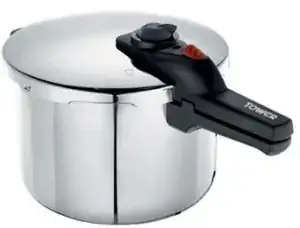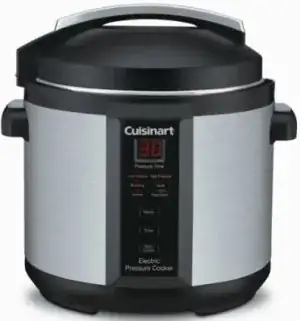Types
There are many different designs, but in general they all achieve the same result. The style you get comes down to personal preference

Personally I do not like the type with the lid that is captured under the internal rim on the pot, as they seem awkward to get the lid on and off

The quarter turn screw down lid (like a jar lid) seems easier to me
Pressure cookers work by increasing the internal atmospheric pressure so water has a higher boiling point, therefore you can fully cook something in water/steam in a shorter time frame. That's it, there is no magic. High pressure wet steam is very effective at transferring heat, so it cooks very evenly and rapidly. The pressure increase is not enough to significantly change the way things cook in terms of flavour absorption
Most pressure cookers come with at least two different pressure settings, medium pressure around 110°C, and high pressure around 120°C. Other than that, get the size you want

There are also the Electric pressure cookers, which are normal pressure cookers with built in computer controller heating and timing systems. These appear to be good idea, but the usually warning of fiddly electronics right next to heat and moisture apply. Some models have a variety of multi-stage cooking timers; including cooking while releasing steam (browning), keeping warm, time delay etc. A common complaint is that they cannot get hot enough, and are often rated at only 110°C
Cooking With
For cooking their main use is the "set and forget" type cooking, with the main goal being to save cooking time and energy consumption
Example #1: To cook a large (1Kg+) frozen corned beef, add about 500 ml water, two whole onions, spices and lock lid down. Place on stove on high heat until pressure come up (indicator pops out), and then set to medium heat and leave for a fixed time and it will be fully cooked with nothing raw or burnt. That takes about 50 minutes per 1Kg in our cooker; each cooker is different depending on exact pressure
Example #2: To cook rice risotto quicker. Use your pressure cooker pot to fry rice and get to the point you would normally start adding stock. Add stock and any other ingredients you would use in the first two thirds of your normal risotto cooking process time into the pressure cooker, lock the lid down, and quickly bring up to pressure. Cook for less than half the time that step would normally take. Run cold water over the lid to release the pressure and remove the lid, and continue your normal risotto recipe. This process can save a whole 10 minutes! Don't get too excited with this one, unless you have a lot of separate risotto batches to do, as you can bulk the pressure cooker step, and then finish a few separate risottos
Preserving With
In some cultures it is popular to preserve food using pressure bottling (canning). This should be the recommended method for anything without a high acid content (e.g. fruits)
Pressure cookers designed for preserving are significantly larger and stronger than their cooking counterparts, and will have a pressure and/or temperature dial on it. The idea being you can load a number of jars or cans into it at once, and bring it up to a higher pressure and therefore temperature. Most of these can be used for cooking too, if you have a large volume of food to do
For safe bottling (canning) of non-acidic foods you need to know that the entire contents of the jars have been brought up to a sufficient temperature for sufficient time to destroy all the bacteria. Typically this is just over 120°C for at least three continuous minutes for the entire contents of the jar. The whole pressure bottling process involves slowly and steadily raising the temperature to this point, and then slowly returning it to room temperature. Sudden changes in temperature will cause problems such as jar seal leaks.
Altitude has an effect on pressure bottling, and must be taken into account. Your local government food safety department should publish guidelines on the temperature and process suitable for your environment and culture
Notes
The main thing that tends to go wrong is that the lids pressure seal deteriorates over time (10+ years). So at the same time you but your cooker, order a spare and store in an airtight bag in a dark place until needed. They might not be available in ten years’ time!


